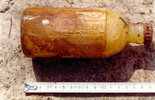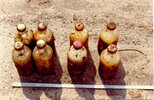Found these photographs in our EOD archive.
No. 76 S.I.P. grenades found in 1981 in the Netherlands.
The special thing is that there are labels on it with text in Dutch (partly readable).
I never heard that these No. 76 grenades were dropped for the resistance / SOE during WW-2.
So could this be a leftover from the former "Stay Behind" organisation during the Cold War?
No. 76 S.I.P. grenades found in 1981 in the Netherlands.
The special thing is that there are labels on it with text in Dutch (partly readable).
I never heard that these No. 76 grenades were dropped for the resistance / SOE during WW-2.
So could this be a leftover from the former "Stay Behind" organisation during the Cold War?


